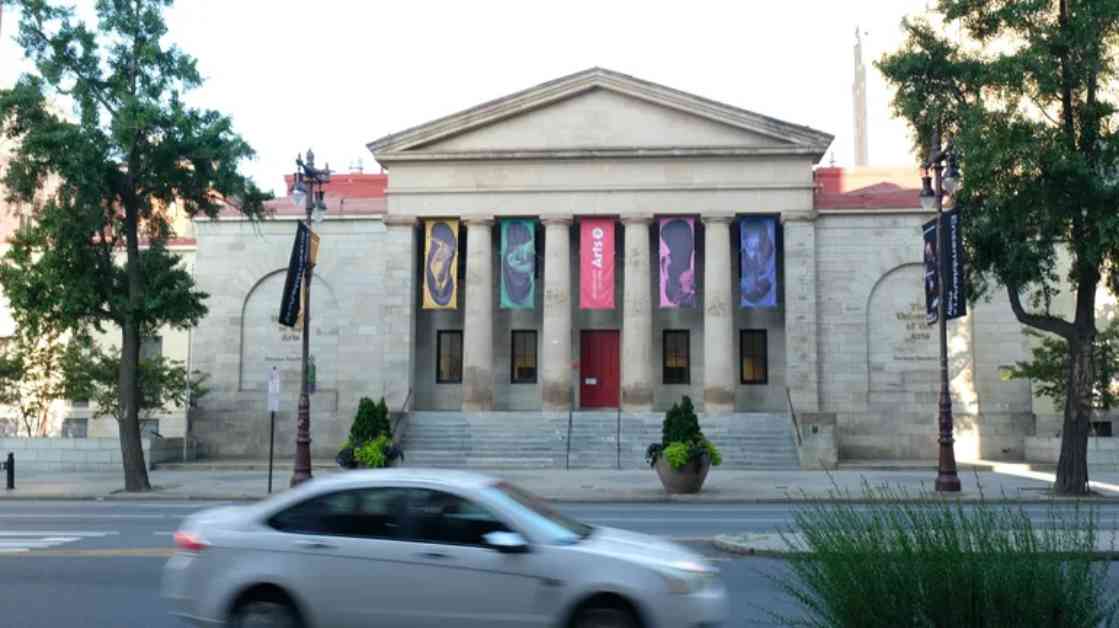Temple University announced on Thursday that they will not be pursuing a merger or acquisition with the University of the Arts, a private institution in Philadelphia that recently closed its doors. The decision comes after months of discussions between the two universities, with initial reports suggesting that a deal was in the works. In a message to the campus community, Temple’s President Richard Englert, Provost Gregory Mandel, and Chief Operating Officer Ken Kaiser stated that they will not be moving forward with a transaction at this time.
The closure of the University of the Arts had sparked hope at Temple University to preserve the legacy of the institution. However, after an intensive due-diligence process that involved external experts and consultations with state and local officials, Temple concluded that they were unable to identify a feasible solution that aligned with their community and mission. Despite this, Temple remains committed to honoring UArts’ legacy as a renowned arts institution in Philadelphia.
One of the primary reasons for the breakdown in negotiations reportedly stemmed from a major UArts donor, the Hamilton Family Charitable Trust, expressing concerns about the involvement of the university’s endowment in a potential transaction. This significant hurdle likely played a role in Temple’s decision to halt the merger talks.
Despite the cancellation of the deal, Temple has taken proactive steps to support over 330 former and prospective UArts students who have now enrolled at the university. Financial aid packages have been adjusted to ensure that these students do not face increased tuition costs, demonstrating Temple’s commitment to assisting those affected by the closure of UArts.
In response to the influx of UArts students, Temple has expedited the creation of a bachelor’s program in illustration and emerging media to cater to their academic needs. Additionally, the university has established a UArts “cohort community” within two of its residence halls, fostering a sense of camaraderie and support among the transitioning students.
Implications of the Decision
The decision by Temple University to cancel the deal with the University of the Arts has significant implications for both institutions and the broader Philadelphia community. While the potential merger promised to preserve UArts’ legacy and resources, the inability to reach a mutually beneficial agreement has left many stakeholders wondering about the future of the institution.
For Temple, the decision represents a missed opportunity to expand its presence in the arts and culture sector, potentially enhancing its academic offerings and reputation in the field. The university’s commitment to supporting former UArts students through tailored programs and financial aid demonstrates a dedication to fostering a seamless transition for those affected by the closure.
On the other hand, the University of the Arts now faces the challenge of navigating its future independently, without the backing of a larger institution like Temple. The closure of UArts has undoubtedly had ripple effects across the local arts community, leaving a void that may be difficult to fill in the absence of a merger.
Looking Ahead
As both Temple University and the University of the Arts chart their respective paths forward, it is essential for them to prioritize the needs of students, faculty, and staff who have been impacted by recent developments. While the cancellation of the deal may present immediate challenges, it also offers an opportunity for both institutions to reevaluate their goals and strategies moving forward.
For Temple, this could mean exploring alternative partnerships or initiatives that align with their mission and values while continuing to support former UArts students in their academic pursuits. The university’s dedication to preserving UArts’ legacy and facilities underscores a commitment to the arts community in Philadelphia, even in the absence of a formal merger.
For the University of the Arts, the focus may shift towards sustainability and innovation as they navigate a new chapter in their history. Finding ways to leverage their resources and expertise to meet the evolving needs of students and the community will be crucial in maintaining their position as a leading arts institution in the region.
In conclusion, while the cancellation of the deal between Temple University and the University of the Arts may mark the end of one chapter, it also signals the beginning of new opportunities and challenges for both institutions. By remaining adaptable and responsive to the needs of their stakeholders, Temple and UArts can continue to thrive and contribute to the vibrant arts landscape of Philadelphia.







